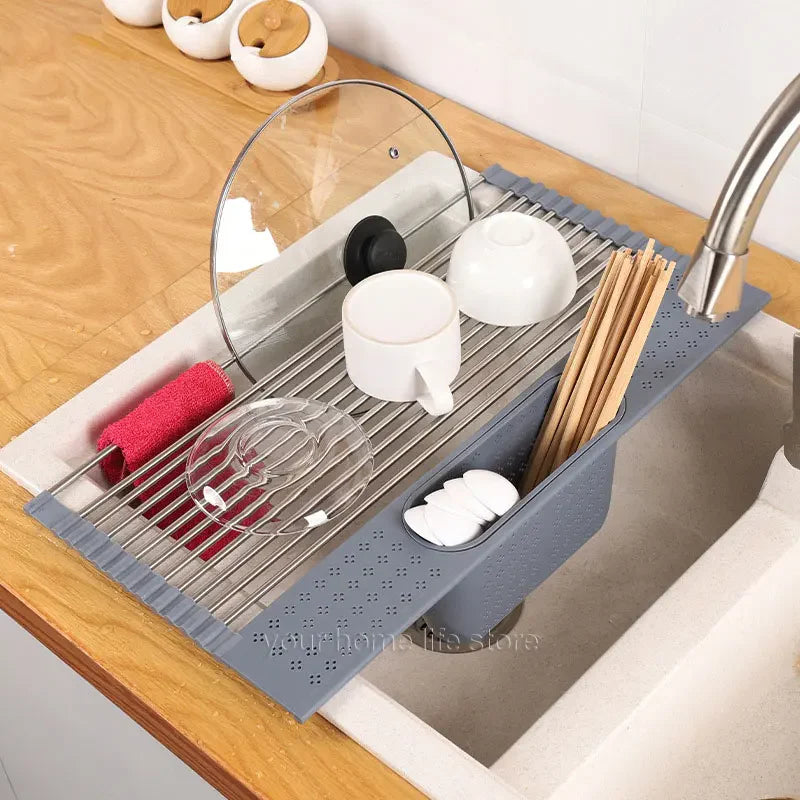
A dishwasher makes your kitchen life easy by offering you a convenient way to clean your dishes. But what happens when you want to install a new dishwasher and the space on your countertop isn’t enough to fit the dishwasher? Can you install a dishwasher without a countertop?
Yes! You can install a dishwasher without a countertop. To fix this, ensure that the space you choose has a wall socket you can plug in the power cord. You can put the dishwasher underneath your sink or behind your kitchen cupboard.
In most kitchens, the dishwasher is usually fixed on the countertop to make it easy to use, but you can install a dishwasher without a countertop. Let’s delve into how you can do it yourself.
Can You Install A Built-In Dishwasher Without A Countertop?
It is possible to install a built-in dishwasher without a countertop. All you need is a suitable place to install it. You can create a space inside your cabinet to fix it or a corner in your kitchen.
But then, no matter where you want to install the dishwasher, choose a place close to the sink and a wall socket. The reason is that you’ll have to connect the dishwasher’s power cord to the wall socket and the hose to the sink.
If you don’t have a space close to the sink or wall socket, get a power cord and hose that’s long.
How To Install A Built-In Dishwasher Without A Countertop
To fix this, you need; a screwdriver, a dishwasher installation kit, electrical tapes, a hose, and clamps. Before you begin, read the user’s manual carefully.
Step One – Turn Off Power And Connections
- Turn off the wall socket that provides power
- Unplug the power code from the switch
- Turn off the water connection by closing the valve under the sink.
Step Two – Find A Safe Place To Keep The Dishwasher
This step is necessary because you cannot place the dishwasher anywhere. You need to fix it close to a wall socket. Dishwasher’s waste line and hose that connects to your sink.
So, if your hose isn’t long, ensure that you find a spot for the dishwasher close to your sink. Doing this will make the installation easier.
Step Three- Connect The Dishwasher To The Sink
- If you want to fix the dishwasher into your cabinet space, drill holes in the sides with a screwdriver.
- Place the dishwasher in position and screw in the locking clips with a screw nail. Ensure that it is firm.
Step Four – Connect The Drain And Fill Hose
- Remove the cap that covers the drain hose, then fix one end of the hose to the hole under the sink. Fix the other end of the dishwasher and secure it with electrical tape.
- Attach one end of the fill hose to the holes in the bottom of the dishwasher. Attach the other end to the sink and secure both ends with electrical tape.
- Ensure the hose ends are firmly secure to prevent leakages.
Step Five – Connect The Power Cords And Test-Run
- Plug the power cord into the wall socket. Do not connect to an extension cord to avoid damage. If you want to connect to an extension socket, ensure it is a three-wire 15-amp, or contact your technician to help you fix it.
- Switch on the appliance and turn on the tap to test-run the dishwasher.
How To Install Dishwasher Without A Countertop: Step By Step
Installing your dishwasher without a countertop depends on the type. Some dishwashers are portable or free-standing, and you can install them yourself. You can keep them between your cabinets, a corner in your kitchen, or behind your cupboard.
If it’s a portable dishwasher, you may want to keep it at any corner, then connect it to power with an extension cord, but that’s not ideal. Before you begin the installation process, ensure that the space you choose to install the dishwasher has a wall socket you can plug in your power cord.
Here, we’ll explain the step-by-step processes you should follow when installing a dishwasher without a countertop.
Step One
Carefully cut out the package of the dishwasher and lift it out.
Step Two
Open the dishwasher and remove the hoses. These hoses should include a drain, washers, fill hose, coupler, and adapter. Once you’ve removed these items, take the dishwasher and place it where you want to install it.
Step Three
Cover the holes on the back of the dishwasher with the hoses. You can locate these holes in the bottom of the dishwasher. Ensure the holes are tight to avoid leakages when the dishwasher is in use.
Step Four
Remove the tap adapter from the hose coupler. Then, install the thin washers into the hose coupler.
Step five
Remove the clip and align it to the top back of the dishwasher. When you fix it, push the locking clip down and ensure it is locked.
Step Six
Remove the cover on the household tap and attach the adapter and the coupler.
Step Seven
Attach the hose to the water outlet and use the tap adapter to seal it. You can also use tape to tie it in place.
Step Eight
Plug the power cord into the wall socket and switch it on.
Step Nine
Test-run your dishwasher by turning on the tap. The water should flow freely from the tap and down the drain. If a clog happens, seek the help of your plumber.
Wrap Up – Can You Install Dishwasher Without Countertop
Installing a dishwasher without a countertop is possible. Just follow the steps in this article, and you’re good to go.



